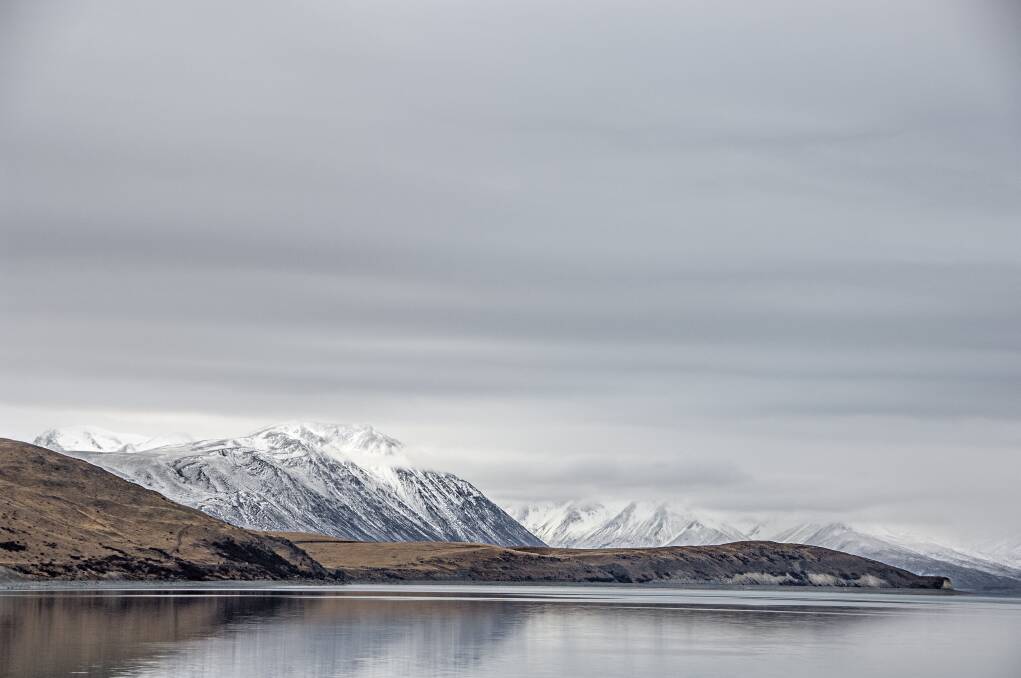
The snow capped Southern Alps
Subscribe now for unlimited access.
$0/
(min cost $0)
or signup to continue reading
In the winter of 2012 my wife, two children and I were lucky enough to be generously shouted a family holiday to New Zealand's South Island by my mother in law Sandra and her partner Bob.
I had only been to New Zealand on one other occasion and that was to the North Island many years before with a group of mates in my bachelor days.
Being a photographer, to say that I was excited about the prospect of this holiday would be an understatement. Over the years I had obviously seen hundreds of incredible landscape photographs and Hollywood blockbuster movies that showcased the incredible landscape. Movies such as "Lord of the Rings: The Trilogy (2001-2003)", Mission Impossible 6, Chronicles of Narnia, The World's Fastest Indian and Vertical Limit were all at least partially filmed in the South Island.
New Zealand's South Island or Te Waipounamu is renowned for its Fiordland National Park including Milford Sound, The Southern Alps which extends almost the entire length of the island and are home to Mount Cook (Aoraki), glaciers, rainforests and the adventure sports town of Queenstown.
We flew into Christchurch Airport, hired a car and commenced our five hour drive to the beautiful picture perfect lakeside town of Wanaka. My family got a little frustrated with me as I wanted to stop every ten kilometers to grab another shot of this ever changing, incredible landscape.
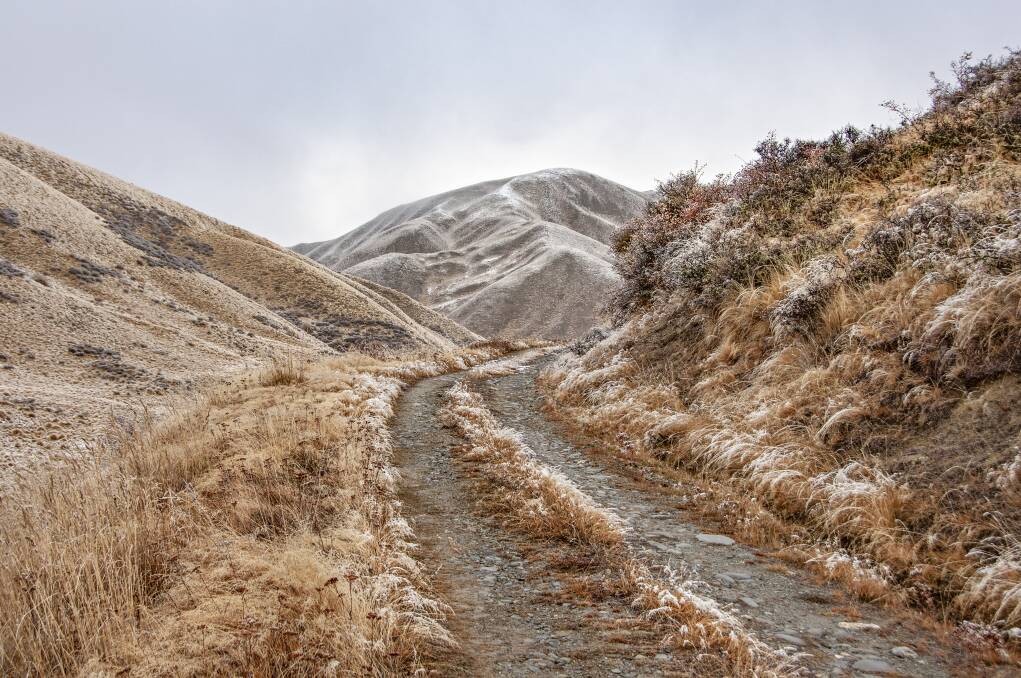
Managed to convince the family to allow me to stop and get some shots of the frosty and rugged landscape of the South Island
Wanaka is surrounded by the majestic Southern Alps and is the gateway to exploring the best of what the southern end of the island has to offer. Wanaka is also home to what is probably the worlds most photographed tree as well as the one of the most romantic and picturesque locations for a wedding ceremony at "The chapel by the lake" located on the shores of Lake Tekapo.
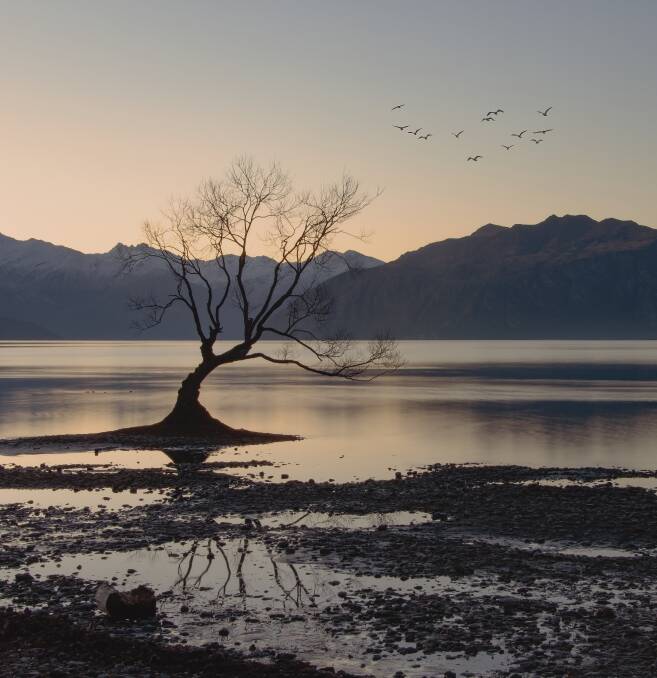
The "Lone Tree at Lake Wanaka" at dusk a short walk from our accommodation.

The "Chapel by the lake" at the foot of The Southern Alps.
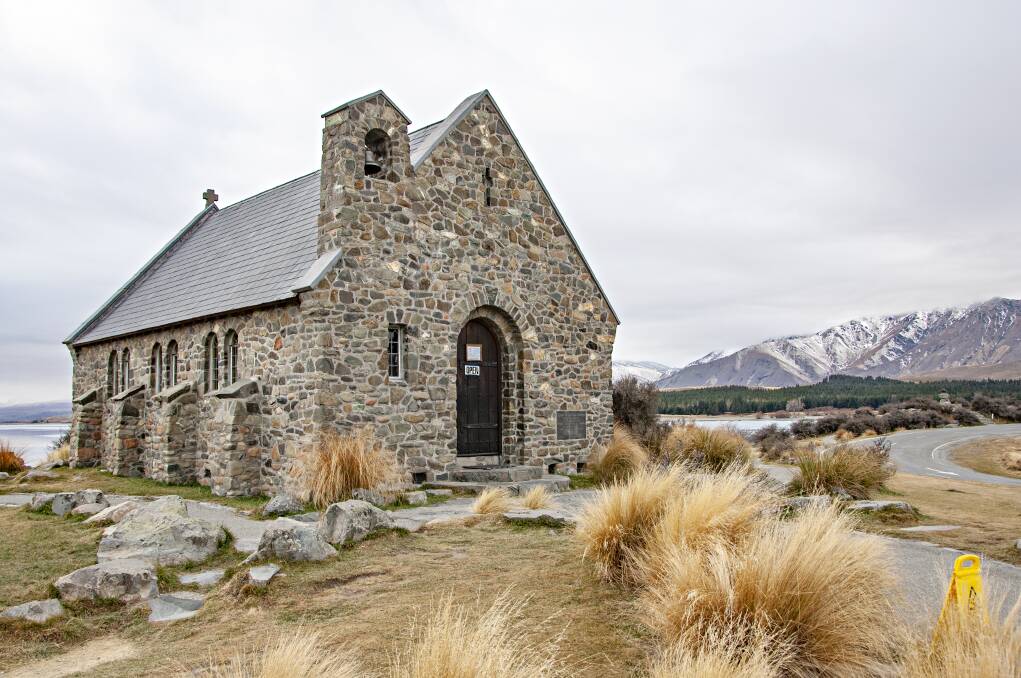
The Chapel by the Lake at Lake Takapo
I spent many hours at dawn and dusk walking around Lake Tekapo photographing the "lone tree of Wanaka" and the chapel in different light. Despite the fact the tree has probably been photographed a million times I felt the totally irrational desire to also add it to my portfolio.
Whilst writing this my wife reminded me of when my sister in law Kylie, who was also with us on the holiday, went for a walk around the resort after dinner. It was dark and the middle of winter. Needless to say is was very cold. All of sudden we heard an extremely loud bloodcurdling female scream and a lot of commotion out where the resort swimming pool was covered and locked down for winter. Unfortunately for Kylie, according to her, the soft floating pool cover a looked a lot like the paving that surrounded the pool area. Kylie was totally drenched, embarrassed and turning blue in front of us. Everyone, apart from Kylie was highly amused by the event.
We did a day trip to Queenstown which is a stunningly picturesque town nestled at the foot of the towering Southern Alps and sits on the shores Lake Wakatipu. Queenstown is often referred to as the adventure capital of the word with access to bungee jumping, jet boat rides, skiing at The Remarkables, caving, rock climbing, zip lining, rafting and sky diving. Unfortunately ............. or probably fortunately, due to having young children I didn't partake in these adrenaline pumping activities. However my wife and six year old son went on the exhilarating jet boat ride. When they returned from the adventure the both looked disheveled, pale and like they had both had face lifts.
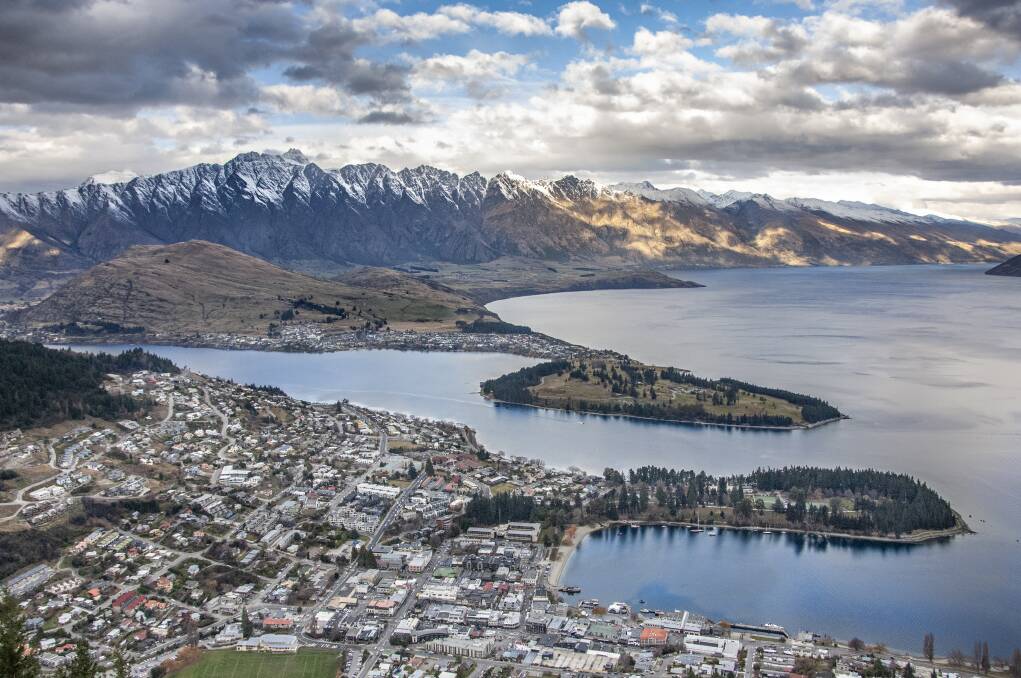
Birdseye view of Queenstown from the top of the cable car ride
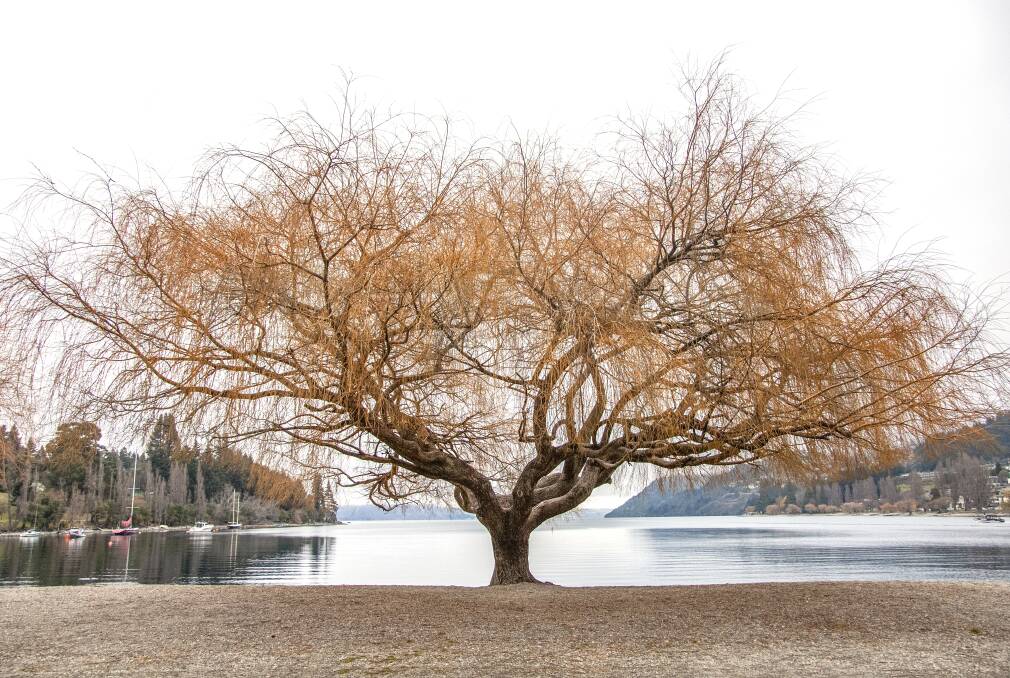
Another lone tree, this time on the banks of Lake Wakatipu in Queenstown.
For me the most stunning natural attraction (and the most anticipated) on this holiday was Milford Sound set in the Fiordland National Park. It had always been on my travel bucket list. We booked into a small motel about forty minutes from Milford Sound and arranged a bus and boat trip deep into the Fiordland National Park. We wondered if we were doing the right thing as it had been raining continuously for two days. It wasn't a cheap trip for the family so I was concerned that because of the inclement weather we'd be wasting our money. I was quickly reassured that the best time to do the boat trip at Milford Sound was after heavy rain. The tour operator said "you will literally see hundreds of waterfalls on your boat trip". He was right and we weren't disappointed. The remote and awe-inspiring rugged beauty on that cold and misty winters day literally took my breath away. Surrounded by plunging cliffs and raging waterfalls, It felt like we had been scooped up and dropped into Peter Jacksons "middle earth". The landscape was unlike any landscape I had experienced before. The rain and mist only added to the magic of the experience. Milford Sound gets over 6214mm a year and rains on average 182 days a year.
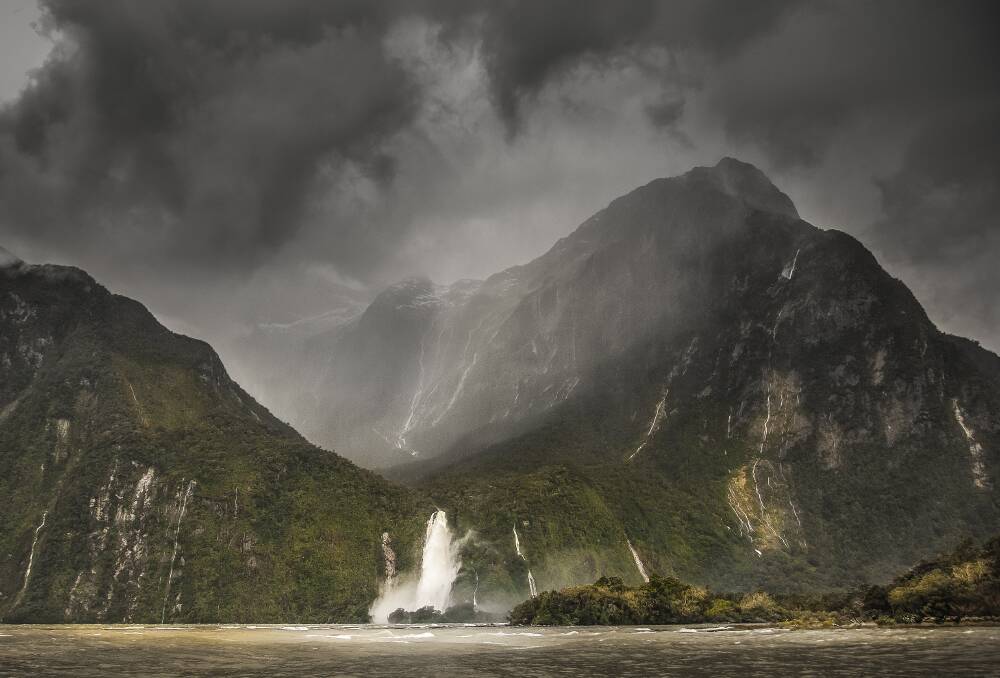
Black skies and heavy rain on added to the experience of exploring Milford Sound and the Fiordland National Park.
After our Milford Sound experience we set off to stay two nights at the luxurious Mount Cook Hermitage Hotel. The view from our suite was also staggeringly beautiful with huge windows looking directly out to the snow capped Aoraki/Mount Cook.

The view of Aoraki/Mount Cook at dawn from our hotel room
Aoraki/Mount Cook is the highest mountain in New Zealand at 3,724 metres or 12,218 feet. According to Wikipedia Sir Edmund Hilary made his first ascent of Mount Cook in January 1948. In February 1948 with Ruth Adams, Harry Ayres and Mick Sullivan, Hillary made the first ascent of the South Ridge to the Low Peak. In order to celebrate the life of Hillary the South Ridge was renamed as Hillary Ridge in August 2011. People travel from all around the globe annually to climb Aoraki/Mount Cook. The climbing season is normally from October to January but is often climbed outside of these dates depending upon weather conditions and the skills and experience of the climbers. Unfortunately 80 people have died since the early 20th century attempting the climb this mountain.
Until next time,
Craig George


